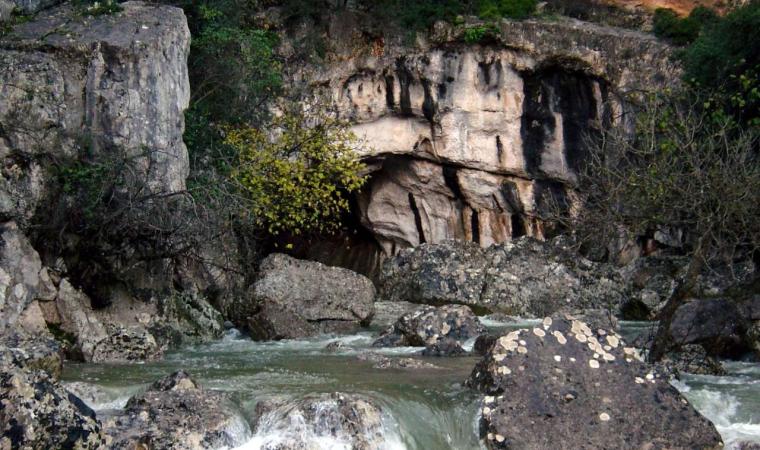Stronger than time, water and wind. The complex at sa Oche e suBentu, "the voice of the wind", set at the bottom of the majestic Lanaittu Valley, is the epitome of natural grandeur. Between high, vertical walls, ancient yews, maples and junipers, over the millennia Karst phenomena have created a place where the wind blows so strongly on the water that it howls. While you explore, listen for the sound of the air flows created by the water inside.
Sa Oche and su Bentu, which you can reach by a trekking path that passes through the Nuraghic village sa Sedda ‘e sos carros, are some of the largest caves in Europe. The caverns can be kilometres long and include spacious rooms up to 100 metres high, decorated with stalactites and stalagmites, tunnels and floors covered in sharp crystals, in a scenery of crevasses, underground lakes and beaches of quartz sand.
Inside sa Oche, after a big storm, huge quantities of air rush through the caves, creating a booming sound. The cave has a large entrance with three lakes, opening at 150 metres altitude, and runs for 260 metres. Su Bentu, which can only be accessed by expert cavers, is part of the Supramonte hypogeic system, crossed by a river that runs from the plateaus of Orgosolo and Urzulei before gushing to the surface as the springs at su Gologone (another jewel in the territory of Oliena), after flowing thirty kilometres through the bowels of the earth. The cave opens wide at 206 metres altitude, and has a long, complicated path on various levels. Linked by a siphon to its twin "Voce", it is mainly horizontal and includes lakes, salons and sharp drops, characteristics that make it a unique place for speleological research and explorers form all over the world.
The feeling of the immensity of nature will also accompany you in the nearby village of Tiscali, the last stronghold of the Nuraghic peoples, and other caves in the Supramonte in Oliena and Dorgali: the stunning Ispinigoli, s’Abbamedica and Grotta Corbeddu, home to a legendary outlaw, with traces of human activity dating back 10,000 years, and the remains of a prehistoric deer from 30,000 years ago.
















